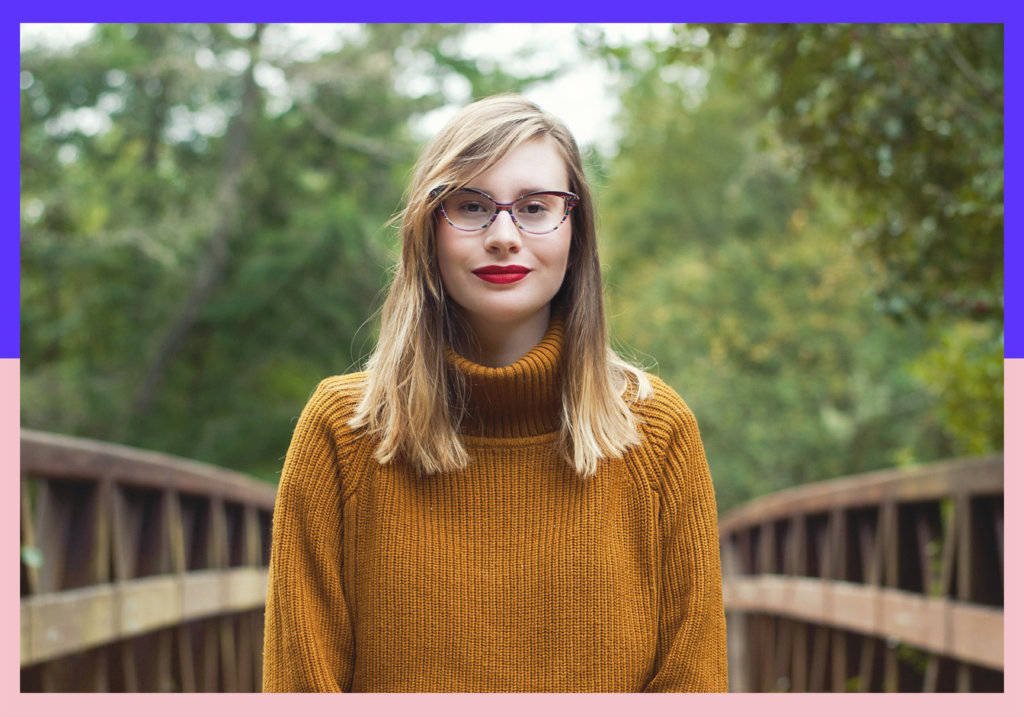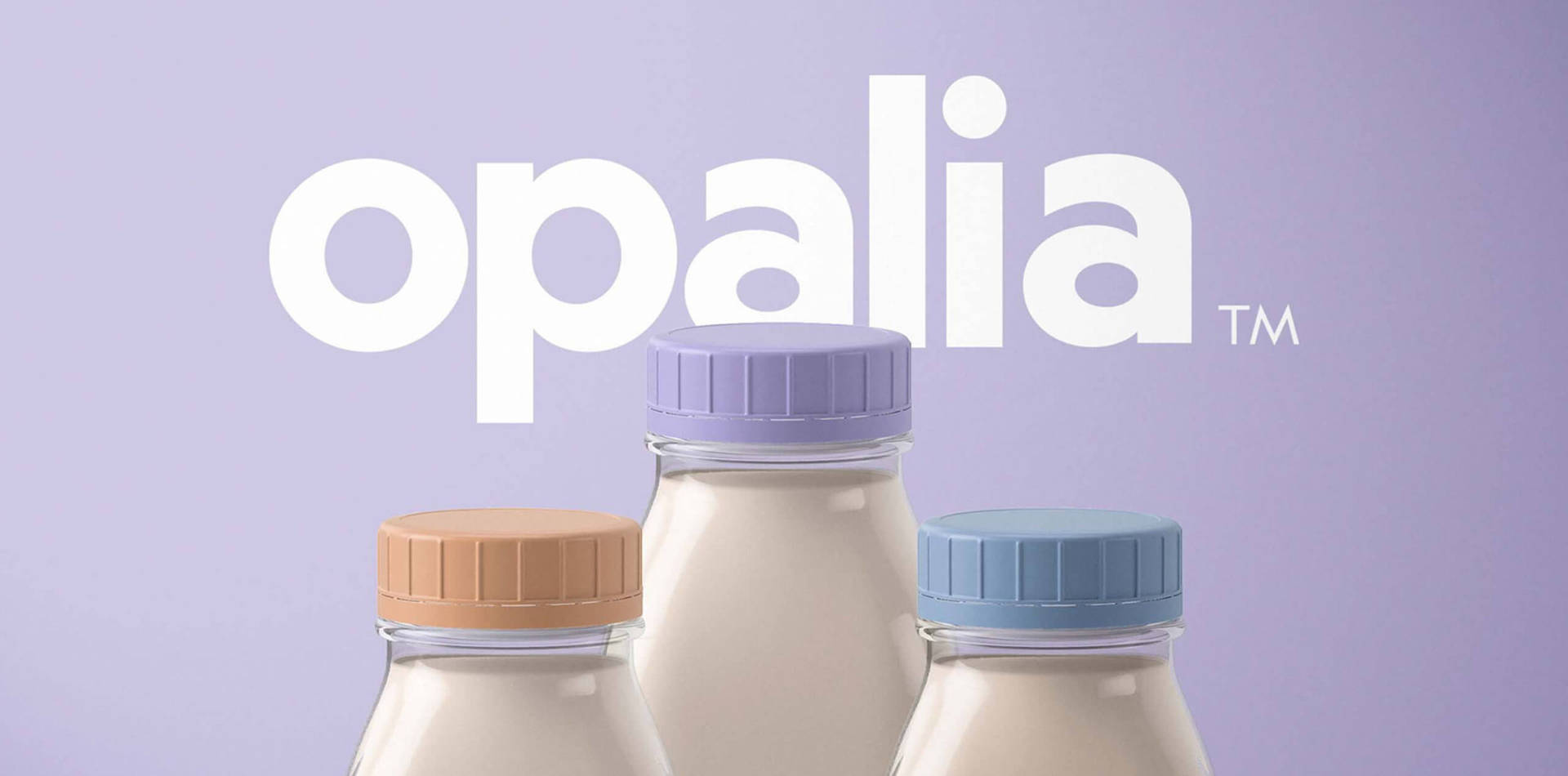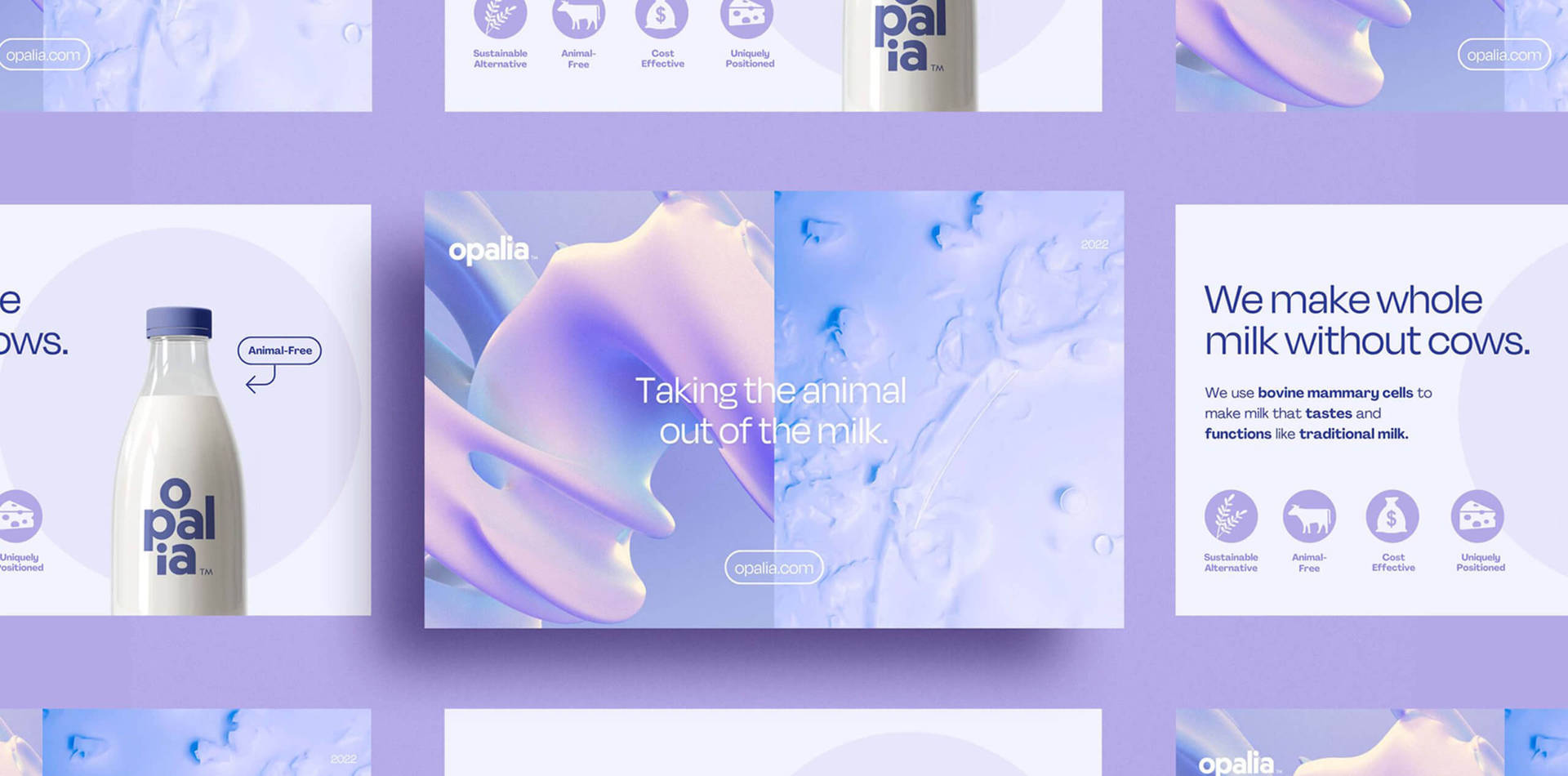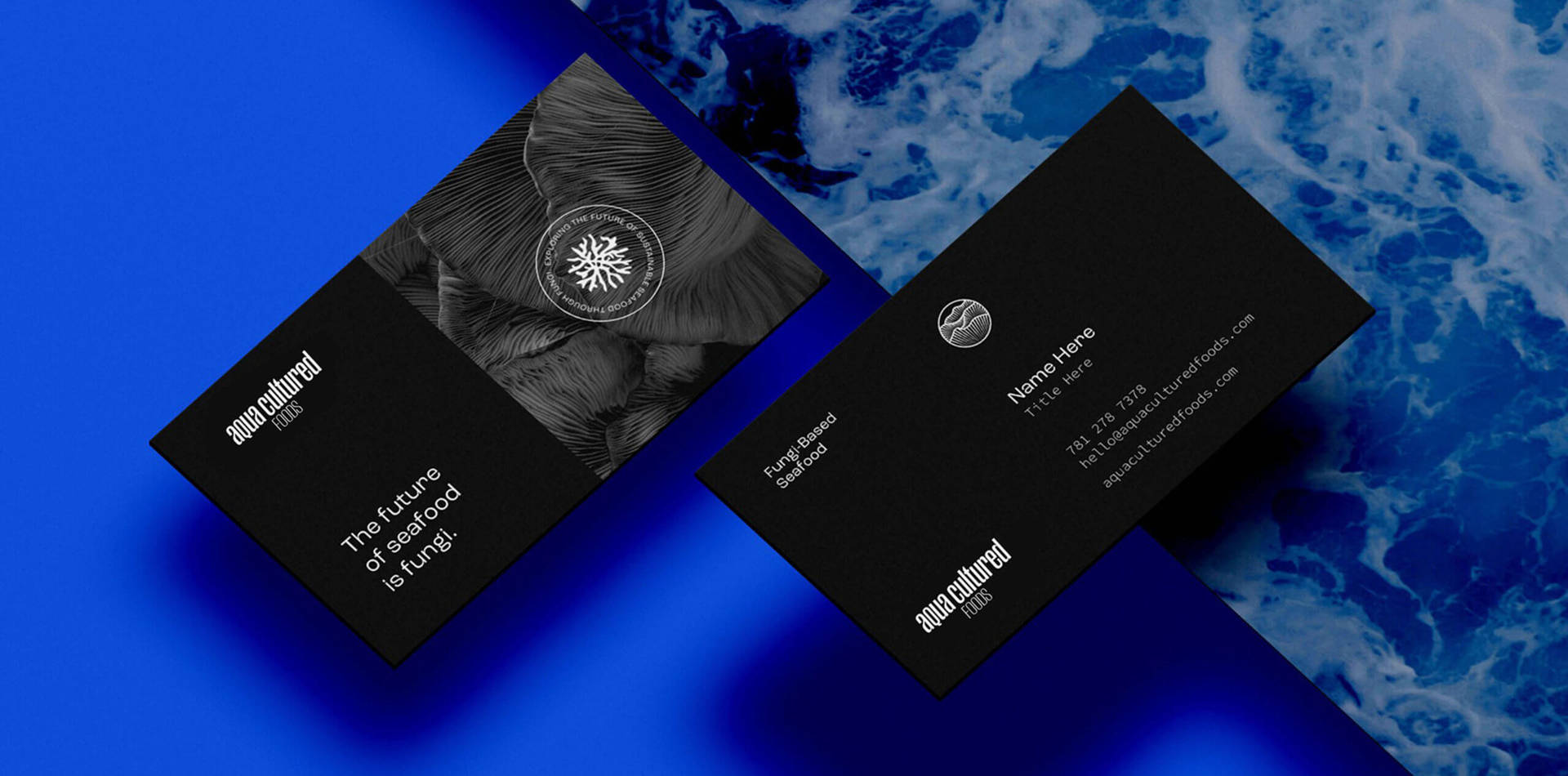Emma Fanning is a designer based in Victoria, British Columbia, Canada. She currently runs Little Fox Design where she creates sustainably conscious brand and packaging projects. Although her career started in museums, Emma’s focus shifted to sustainable design after making changes in her personal life to be more eco-conscious.
Through her agency, Emma has created an inspiring set of works that are graphically exciting, purposeful, and thoughtful. From edible spoons to fungi-based seafood, Little Fox’s clients offer a glimpse of a better world.
Through her award winning agency, Emma also runs ‘The Green Graphic Design Course”, which teaches designers comprehensive strategies and tools to become more eco-friendly in everyday decision-making: “We believe sustainability should be the norm for graphic designers.” It’s a must-take course for any designer with an interest in eco-conscious design.
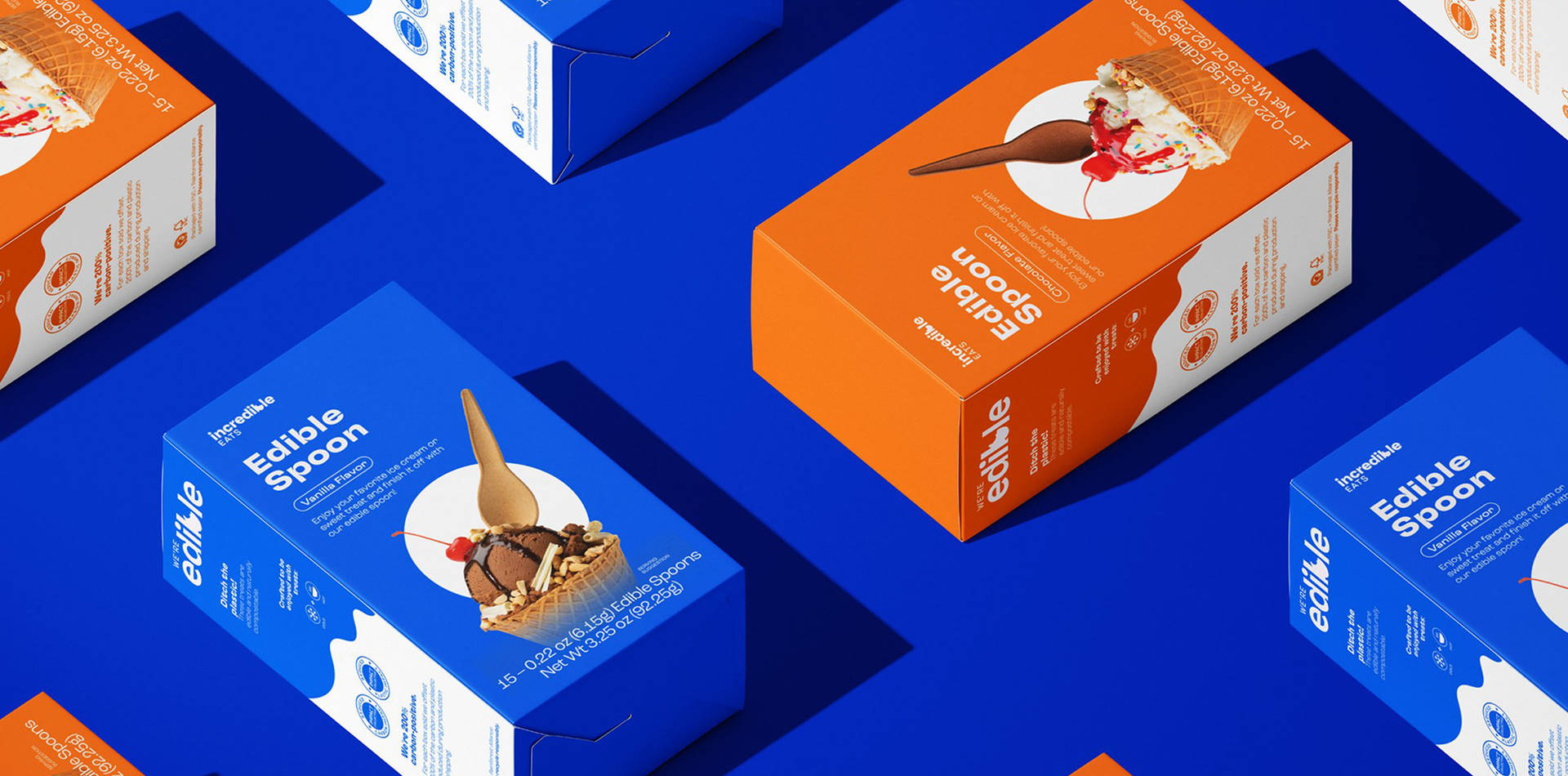
Mary Kate talked with Emma to learn more about her amazing work, the difference between virgin and sourced paper fibers, and insights into an eco-conscious design future.
Mary Kate: Can you tell us a bit about your career path and how you ended up starting Little Fox?
Emma Fanning: I took an unconventional route into becoming a designer. I’ve always loved museums and spent my early 20s volunteering and working in natural history museums across Canada. I was aiming towards a career in curatorship. However, at almost every museum I worked at, I was placed in the role of designer as I had basic Photoshop skills. Through that experience, I learned to love design and started freelancing on the side as well as working in-house. Eventually, to combat my anxiety around the climate crisis, I shifted my personal lifestyle to something more sustainable and eco-conscious., I felt my own personal actions weren’t enough. I wanted to be sustainable in my work as well. That is what really caused the shift. I spent many hundreds of hours researching green design, supply chains, forestry, recycling, anything that I could find that related even tangentially to design and the environment. I started sharing my research on Instagram and it really kickstarted a community of designers who wanted to make an impact through their own design businesses.
What does sustainability in design mean to you?
I think there’s an interesting juxtaposition between how design is treated in popular culture through memes like “you can’t save the world with a poster”, and the “Is there a doctor on the plane?” jokes and the role designers actually play in the greater picture. Obviously, design is not going to save the world or come even close. But design permeates our lives be it advertising or packaging or art. Every successful political campaign had a team of designers curating the visuals (for better or worse), and a designer is behind the advertising to buy or not buy (thinking about Patagonia’s 2011 ‘Don’t Buy This Jacket’ in the New York Times, encouraging people not to buy jackets on impulse for Black Friday. The ad grew their sales 30%). I believe designers are in a unique position between inspiration and creation; they are the in-between of art directors/marketers and printers. While the choice of materials for designs is often overlooked and decided through inertia, conversations around materials fit easily within a designer’s scope: What paper will this project look best on? Is that paper stock too thin? What option is most environmentally responsible? Designers are uniquely positioned to discuss responsible use of materials. Often these decisions are made without thought; the cheapest option is chosen, or an offhand recommendation from the printer is taken at face value without discussion. Designers have unique opportunities to explore this space and bring the information back to their departments or clients. Sustainability in design means facing these questions head on and making educated decisions about them. As an agency owner, my clients are looking to me to provide not only the best design solutions to their problems but also to offer my input for best material and print choices as well. I believe it is my responsibility to be informed as to the most ethical choices and make the case to my clients why those choices are better for their businesses as well. While this practice is barely a ripple in the pond, I believe that a time will come when there won’t be the option of choosing an unsuitable option. A better future will demand the use of basic sustainable materials and I believe we can all work towards this future by making these choices in the present.
“What option is most environmentally responsible? Designers are uniquely positioned to discuss responsible use of materials. Often these decisions are made without thought; the cheapest option is chosen, or an offhand recommendation from the printer is taken at face value without discussion. Designers have unique opportunities to explore this space and bring the information back to their departments or clients.”
Little Fox focuses specifically on sustainable design projects. Is there a favorite project of this type that you’ve worked on, and, if so, why is it important to you?
One of our favourite projects to work on has been with Aqua Cultured Foods. They are an alternative-protein startup that has created a fungi-based seafood. In an alternative world, where I wasn’t a designer or a museum curator, I’d have been a marine biologist. I’m incredibly geeked by the ocean–any design project where I get to research some aspect of marine biology gets me extra excited. I also learned a lot about fungi and mycelium through the project as well, which was extremely cool (shoutout to Merlin Sheldrake’s book “Entangled Life”). The team at Aqua Cultured is very passionate about the stability of our ocean ecosystem and how unsustainable the practices of industrial fishing can be. It was an amazing alignment of values and we were able to really develop this value-set into the visuals of the brand. They met us every step of the way with discussions about sustainability and the realistic impact of their product and how to discuss their sustainable commitments with the world. It was a fantastic collaboration, and I can’t wait to buy their product when it hits the shelves in the near future.
The campaign for ‘Incredible Eats’ is an impactful sustainable project you’ve recently worked on. Could you talk us through the creative approach you took from the process to the final outcome?
Incredible Eats’ edible spoons/culture was such a fun project to work on. While they have a B2C product anyone can buy on their website, their primary target demographic is supplying to festivals, ice cream shops and other venues where they can increase their impact by eliminating the need for disposable single-use spoons. The spoons are often used at parties and other events, so we wanted to put forward a direction for the brand that was exciting and inviting; something that sparked curiosity. “An edible spoon? Really?! I want to try that!” Sustainability was a high priority for the founders, and so they built in transparent messaging around their commitments in their website and on their packaging. They’re certified carbon- and plastic-neutral, package their spoons in FSC-Certified Paper, and the wrappers the spoons come in are paper-based and recyclable. Ultimately, the guiding direction was one of fun; not all sustainable products have to be serious and focused on guilt.
We love that you offer a course on becoming a more sustainable designer, the ‘Green Design Course‘. Can you talk about the course and why you think it’s important for designers to learn about using sustainable materials?
We created the course as a way to provide education sustainable design in an accessible and comprehensive way. I wanted nobody to have to struggle with original research as I had to when I started out. The course covers beginner to advanced material for everything from material use, climate impact, discussing sustainability with clients, recycling, understanding the lumber industry, and more. I wanted to keep the price as low as possible as we think providing this information is a moral good and we want every designer to be a sustainable designer. If it was financially possible for us, we’d make the course free, and hope one day to be able to offer it cost free. I think one of the interesting things we’ve found since becoming a sustainable design agency is that our clients and inquiries are coming to us already excited by the sustainable side. They say frequently that they’d been looking for a designer that understood their environmental values and were struggling to find someone until they came across us. So, I’d argue that people are placing more value on sustainability and if you as a designer can offer this expertise to clients, it can differentiate you from the competition.
“I’d argue that people are placing more value on sustainability and if you as a designer can offer this expertise to clients, it can differentiate you from the competition.”
Do you see any new materials or ways of designing more sustainably that excite you?
I’m really excited about the prospects of seaweed and mycelium alternatives to plastic and styrofoam packaging. Sway is currently working on a seaweed alternative to soft plastics and films for food packaging and Evocative has a mycelium “foam” that protects fragile objects in the same way as styrofoam that’s available on the market right now. Sway’s plastic alternative is still in development but aims to recreate the beneficial properties of plastic such as the moisture barrier and shelf stability while remaining plastic-free and sustainable. According to Sway, different types of seaweed produce different textures and colours which is SO cool to see as a designer. Packaging is a difficult area in which to make sustainable choices, especially for food products, and I’m eagerly awaiting these new materials to pass regulation and hit price parity with traditional plastics.
If you could share one way that designers can work more sustainably, what would it be?
One of the most important principles you can consider as a sustainable designer is to pay close attention to your choice of materials. As much as “green web design” is trendy right now, if you want to have an impact, taking the extra time to evaluate paper stocks and materials for your clients even on such simple projects as business cards and other print collateral can make a huge difference. In any physical project you work on as a designer 99% of your environmental impact comes at the material stage: the remaining 1% is found in the inks, glues, bindings, and other embellishments like foils/coatings you spec for the project. So simply by looking into recycled materials, alternative fibres, or even sustainably sourced paper fibres instead of virgin fibres is the easiest and best way of making a sustainable choice. I often see designers get caught up in choosing an eco-friendly font, but truthfully, ink use is less than 1% of the material cost, and the font usage even less, so you’ve very quickly hit diminishing returns on your choices.
“One of the most important principles you can consider as a sustainable designer is to pay close attention to your choice of materials. As much as “green web design” is trendy right now, if you want to have an impact, taking the extra time to evaluate paper stocks and materials for your clients even on such simple projects as business cards and other print collateral can make a huge difference.”
How has being a woman impacted your career?
Overall, I think my experience has been neutral. I’ve been very lucky and had people take chances on me when I was starting out as a designer and young professional, regardless of my gender. The only exception was when it came to banking. There is a distinct difference in my experience when it comes to banking as a small business owner however: if I go to the bank alone to deposit a cheque or manage my business accounts, I am routinely met with distrust by banks even when it comes to depositing cheques from recurring clients. When I bring my husband with me it’s always a pleasant experience and the treatment is a 180 degrees from the usual. I’ve had this experience with different aspects of my business, that is of professionals not looking out for my best interests or attempting to take advantage of a perceived financial illiteracy. It has definitely made me much more defensive and independent in terms of how I handle my finances for the business. I think this is unfortunate, and it’s definitely cost me financially over the years; I am certain my experience would have been different if I was a man with a small business.
